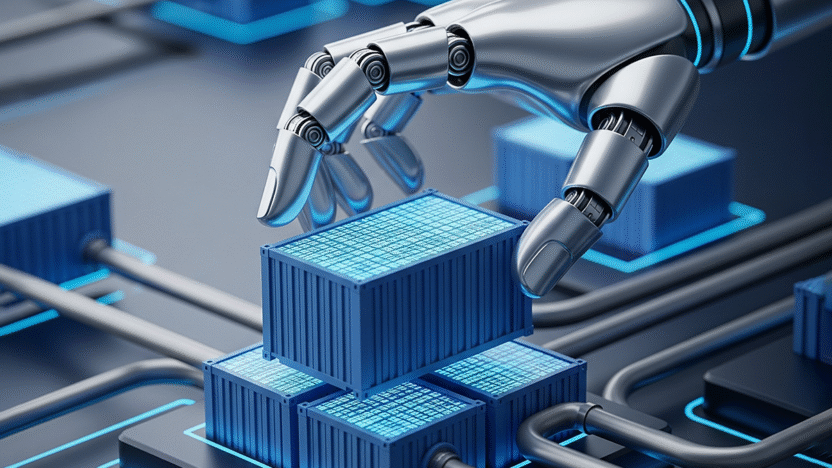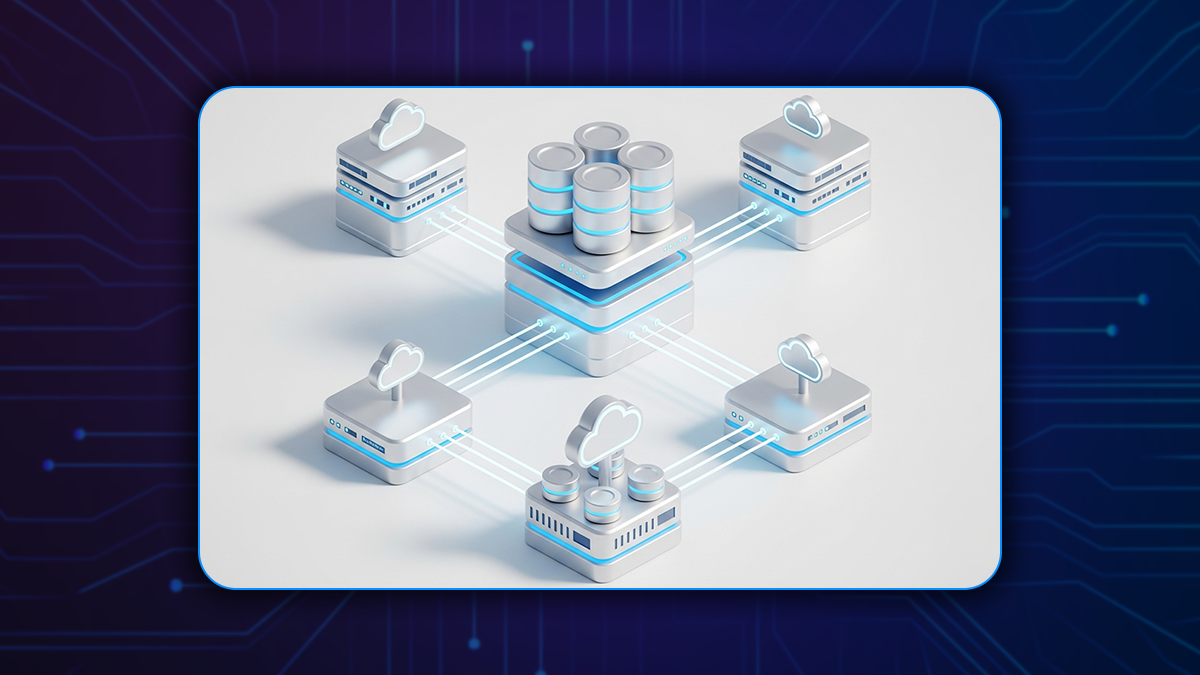In the digital ecosystem of 2025, a robust back-end infrastructure is the foundation of any successful online business. While users interact with your front-end interface, the backend powers functionality, manages data, and ensures your applications can scale with your growing business needs. At Webashlar, we specialize in creating rock-solid back-end solutions that provide the reliability, security, and performance your business demands.
Table of Contents:
1. Introduction
2. Back-End Development for Scalable Solutions
3. Core Technologies for Back-End Development in 2025
4. Back-End Architecture Models
5. API Development and System Integration
6. Performance Monitoring & Optimization
7. Security in Back-End Development
8. Conclusion
1. Introduction
- In the ever-evolving digital landscape of 2025, the performance, security, and scalability of your application’s back end are not just technical considerations. They are the backbone of your entire business success.
- While users typically interact with sleek, responsive interfaces and intuitive design on the front end, the back end quietly powers every transaction, process, and piece of data flowing behind the scenes. It’s the invisible force that makes the digital experience seamless, efficient, and reliable.
- This reality makes rock-solid back-end development a non-negotiable foundation for any modern digital business. Whether you’re running an eCommerce platform processing thousands of orders per minute, a SaaS product managing user generated content and analytics, or a fintech service handling sensitive financial data, your back-end architecture must be robust, scalable, and future-ready.
- At Webashlar, we’ve spent years helping businesses across sectors build and maintain back-end systems that do more than just “hold up” the power progress. Our philosophy is simple: your back end should never hold your business back. Instead, it should be a strategic asset that supports rapid growth, drives user satisfaction, and delivers performance under pressure.
2. Back-End Development for Scalable Solutions
Back-end development refers to the creation and maintenance of the server-side logic, databases, and infrastructure that manage the “behind-the-scenes” functionality of a web or mobile application. It’s everything that users don’t see but rely on every time they interact with your product or platform.
Scalability refers to the system’s ability to handle increased load whether in terms of user traffic, transactions, data volume, or computation without compromising performance, security, or availability.
There are two primary dimensions of scalability:
- Vertical Scalability (Scaling Up): Adding more power (CPU, RAM, storage) to a single server or instance.
- Horizontal Scalability (Scaling Out): Adding more machines or instances to distribute the load across systems
3. Core Technologies for Back-End Development in 2025
Back-end development in 2025 is no longer just about making things work behind the scenes it’s about building fast, scalable, secure, and intelligent systems that support dynamic front-end experiences and mission-critical business logic. The rapid advancement in technology has led to the rise of powerful tools and frameworks that simplify complex operations, improve scalability, and integrate AI-driven features.
This section breaks down the core technologies driving back-end development in 2025, explaining how each contributes to building robust, future-proof systems.
- Node.js (with Express, NestJS)
- Python (with Django, FastAPI)
- Go (Golang)
- Ruby on Rails
- PHP (Laravel)
4. Back-End Architecture Models
The architecture of your back-end system is a critical determinant of your application’s performance, scalability, maintainability, and flexibility. Choosing the right back-end architecture model ensures that your application can grow, integrate with other systems, and respond to changing business needs.
In 2025, various architectural models are in widespread use, each suited to different project sizes, goals, and industries. This section explores the most common and impactful back-end architecture models, their strengths, use cases, and how to choose the right one for your business.
- Monolithic Architecture: A monolithic architecture is a unified model where the entire application front-end, back-end logic, and data access resides in a single codebase and is deployed as one unit.
- Layered (N-Tier) Architecture: Layered architecture divides the back-end into separate layers: presentation, business logic, data access, and sometimes services.
- Microservices Architecture: Microservices architecture breaks the back-end into small, independent services, each responsible for a single function. Services communicate via APIs (typically REST or gRPC).
- Serverless Architecture (Function-as-a-Service): Serverless architecture enables developers to build and run functions without managing infrastructure. Code runs in response to events, managed by cloud providers.
- Event-Driven Architecture: In this model, services communicate through events. Events (e.g., user signup, order placed) trigger actions asynchronously.
- API-First Architecture: API-first design means your application logic is built around APIs from the beginning, with the back-end designed to serve front-end and external consumers consistently.
- Hybrid Architecture Models: Many real world applications combine architecture models to leverage the strengths of each. For example, a microservices-based application may use serverless functions for background jobs and monolithic services for legacy systems.
5. API Development and System Integration
In the digital first world of 2025, the back-end is no longer a siloed, isolated part of an application. It’s a dynamic, interconnected hub that must communicate efficiently with internal services, external platforms, third-party tools, and client-facing front ends. At the heart of this interconnectivity lie Application Programming Interfaces (APIs) and robust system integration practices.
APIs and system integration are foundational to modern back-end development. They enable interoperability, foster automation, accelerate innovation, and allow businesses to build flexible digital ecosystems that scale efficiently.
What Is API Development?
API development refers to the process of designing, building, and deploying interfaces that allow different software systems to communicate with each other. These interfaces define how applications request and exchange data and functions.
There are several types of APIs commonly used:
- REST APIs – Resource-based, stateless APIs using HTTP methods.
- GraphQL APIs – A more flexible approach where clients query only the data they need.
- gRPC APIs – A high-performance framework using protocol buffers, ideal for internal microservices.
- Webhooks – APIs that push real-time data to other systems in response to specific events.
6. Performance Monitoring & Optimization
In the fast-paced digital landscape of 2025, back-end performance is more than a technical concern it’s a business imperative. A sluggish or unresponsive back-end can result in user frustration, lost revenue, reduced engagement, and damaged brand reputation. Performance monitoring and optimization ensure that applications run smoothly, reliably, and efficiently even under heavy traffic or complex workloads.
This section explores how to monitor back-end performance effectively and apply optimization strategies that deliver consistently high availability, speed, and scalability.
Why Performance Matters in Back-End Systems
Modern users expect fast, seamless digital experiences. While the front-end handles presentation, the back-end is responsible for:
- Database operations
- Business logic execution
- Authentication and authorization
- API responses
- Third-party integrations
- Data processing
If any of these layers perform poorly, the entire application is affected. Strong back-end performance contributes directly to:
- Improved user satisfaction
- Higher retention and conversion rates
- Lower infrastructure costs
- Reduced downtime and support tickets
What Is Performance Monitoring?
Performance monitoring refers to the ongoing process of collecting, analyzing, and interpreting metrics from back-end systems to ensure optimal functionality.
This includes:
- Uptime monitoring – Checking if your application is available 24/7.
- Error tracking – Identifying failures or exceptions in real time.
- Latency tracking – Measuring the response time of APIs and database queries.
- Resource usage analysis – Monitoring CPU, memory, storage, and network consumption.
- Throughput analysis – Measuring how much data your system processes over time.
7. Security in Back-End Development
In 2025, as businesses become more digitally interconnected and data-driven, back-end security is no longer optional it’s foundational. The back-end handles sensitive data, authenticates users, integrates with external systems, and powers mission-critical business logic. Any vulnerability at this layer could lead to data breaches, service disruption, financial loss, and irreversible reputational damage.
This section explores the importance of back-end security, the key threats, and proven strategies to build resilient systems that safeguard your users, data, and business.
Why Back-End Security Matters
The back-end is the engine room of any modern web application. It connects databases, APIs, authentication mechanisms, and cloud services all of which process and store highly sensitive information.
A compromised back-end can expose:
- Customer personal data (PII)
- Payment details or financial records
- Internal admin portals or tools
- Intellectual property and proprietary business logic
Application-wide access tokens and credentials
8. Conclusion
In the dynamic, fast-paced digital ecosystem of 2025, the success of any online platform or application is deeply rooted in the strength and flexibility of its back-end infrastructure.
While users may never see the backend in action, it is the hidden engine that powers scalability, security, performance, and seamless user experiences.From understanding what back-end development truly entails to exploring scalable architectures, cloud-native technologies, API integrations, and security best practices this guide has demonstrated that back-end development is not just about writing server-side code.
It’s about crafting robust digital foundations that adapt to growth, withstand threats, and support long-term innovation






Your posts always give me something new to think about. Thank you for sharing your knowledge.
I love hearing that my posts spark new thoughts! Thanks for your kind comment.
I love how you break down complex topics into something easy to understand.